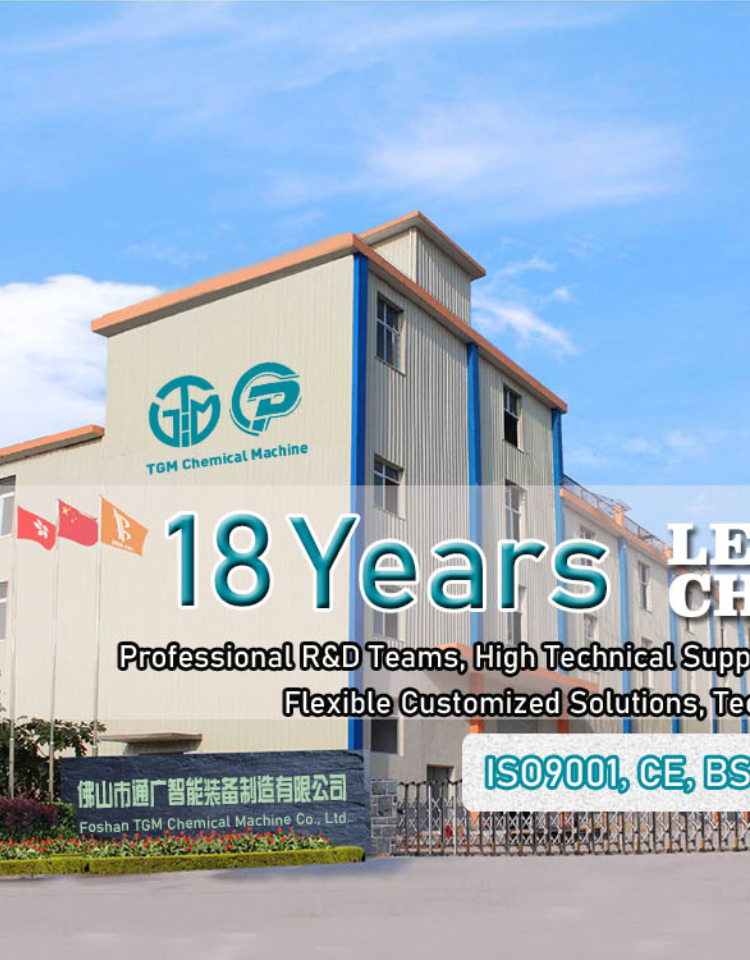Email cannot be empty
Password cannot be empty
Email format error
Email cannot be empty
Email already exists
6-20 characters(letters plus numbers only)
The password is inconsistent
Email format error
Email cannot be empty
Email does not exist
6-20 characters(letters plus numbers only)
The password is inconsistent


The Complete Guide to Hot Melt Adhesive Production Line
Introduction
Hot melt adhesives (HMAs) are thermoplastic adhesives that become liquid when heated and solidify upon cooling. They are widely used in packaging, woodworking, automotive, and electronics industries due to their fast setting time, strong bonding, and environmental friendliness (no solvents). A well-designed hot melt adhesive production line is crucial for manufacturing high-quality products efficiently.
In this blog, we will explore:
-
The key components of a hot melt adhesive production line
-
The manufacturing process
-
Quality control measures
-
Latest technological advancements
Key Components of a Hot Melt Adhesive Production Line
A modern HMA production line consists of several integrated systems:
1. Raw Material Handling System
-
Storage Silos & Hoppers – For storing base polymers (EVA, SBS, PO), tackifiers, waxes, and additives.
-
Weighing & Dosing Units – Precise automated systems to measure raw materials before mixing.
2. Mixing & Blending Unit
-
High-Temperature Melt Mixers – Equipped with heating jackets and high-shear agitators to ensure uniform melting (typically at 120–180°C).
-
Vacuum Deaeration System – Removes air bubbles to improve adhesive consistency.
3. Extrusion & Filtration System
-
Single or Twin-Screw Extruders – Homogenize the molten adhesive and ensure proper viscosity.
-
Filtration Modules – Remove impurities for a clean final product.
4. Cooling & Pelletizing System
-
Cooling Conveyor Belts or Water Baths – Solidify the adhesive into strands.
-
Pelletizers – Cut the strands into uniform pellets or granules for easy packaging and application.
5. Packaging & Automation
-
Automatic Bagging Machines – Weigh and pack pellets into bags, boxes, or bulk containers.
-
Robotic Palletizing – For efficient logistics handling.
The Hot Melt Adhesive Manufacturing Process
-
Material Preparation
-
Raw materials (polymers, resins, waxes, stabilizers) are pre-weighed and loaded into the feeding system.
-
-
Melting & Mixing
-
The mixture is heated in a melt tank with continuous stirring to ensure homogeneity.
-
-
Filtration & Degassing
-
The molten adhesive passes through filters to remove impurities, and vacuum systems eliminate trapped air.
-
-
Extrusion & Shaping
-
The adhesive is extruded through a die to form strands or sheets.
-
-
Cooling & Pelletizing
-
Strands are cooled and cut into pellets, which are then sieved for consistency.
-
-
Packaging & Storage
-
Pellets are packed in moisture-resistant bags and stored in a controlled environment.
-
Quality Control in HMA Production
To ensure high-performance adhesives, manufacturers implement strict QC measures:
-
Viscosity Testing – Ensures proper flow characteristics.
-
Softening Point Analysis – Determines thermal stability.
-
Adhesion Strength Tests – Verifies bonding performance on different substrates.
-
Color & Clarity Checks – Important for aesthetic applications.
Latest Trends in Hot Melt Adhesive Production
-
Bio-Based HMAs – Sustainable adhesives made from renewable resources.
-
Smart Manufacturing (Industry 4.0) – IoT-enabled production lines for real-time monitoring.
-
Low-Temperature HMAs – Energy-saving formulations for heat-sensitive substrates.
-
Recyclable & Compostable Adhesives – Supporting circular economy initiatives.
Conclusion
A well-optimized hot melt adhesive production line ensures efficiency, consistency, and high product quality. With advancements in automation and sustainable materials, the HMA industry continues to evolve, meeting the demands of various sectors.
If you’re planning to set up or upgrade your HMA production line, consider factors like raw material selection, process automation, and environmental impact to stay competitive.

